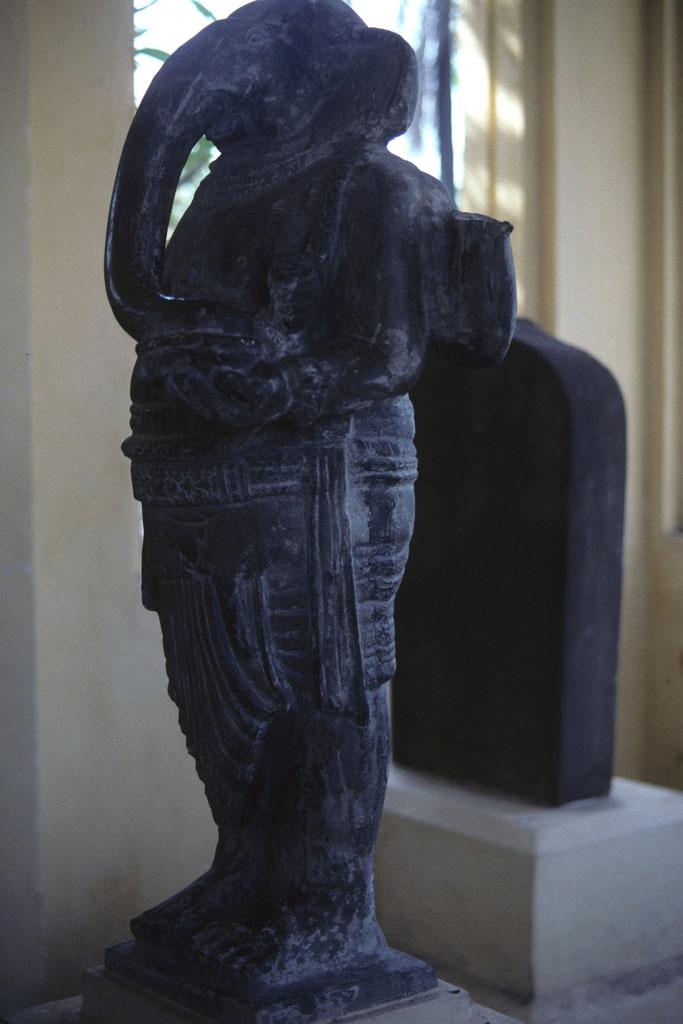Eighth century Cham stone statue of Hindu god Ganesha at Danang Museum
This stone statue of the Hindu god Ganesha, located at the Danang Museum, was carved by Chams during the eighth century. The statue portrays Ganesha standing erect with his elephant head and human body. Barefoot but dressed in a fine draped tunic, Ganesha holds a bowl in his left hand.
Maritime trade between India and China led to the spread of Hindu and Buddhist ideas to many parts of coastal Southeast Asia during the first millennium A.D. Chams once ruled a Hindu kingdom called Champa whose influence extended through what is now southern Vietnam and Cambodia.
The Champa kingdom competed with the Hindu Khmer kingdom centered in Angkor (now in Cambodia) as well as with the Chinese-influenced people of northern Vietnam. Similar buildings dating from roughly the same time period and Indian influence can be seen in Cambodia as well as in Java and southern Sumatra, Indonesia where the Hindu-Buddhist kingdom of Srivijaya ruled by A.D. 700.
Chams, now relatively small ethnic minorities living in both Vietnam and Cambodia, speak an Austronesian language related to Malay, Indonesian, and Philippines languages. Like most other coastal Malays, they adopted Hindu practices before A.D. 1,000, but then turned towards Islam when trade and political dynamics changed between A.D. 1500 and 2000. In Vietnam today, ethnic Chams are divided into separate Muslim and Hindu communities.

Creative Commons BY-NC-SA
This item has a Creative Commons license for re-use. This Creative Commons BY-NC-SA license means that you may use, remix, tweak, and build upon the work for non-commerical purposes as long as you credit the original creator and as long as you license your new creation using the same license. For more information about Creative Commons licensing and a link to the license, see full details at https://creativecommons.org/licenses/by-nc-sa/4.0/.